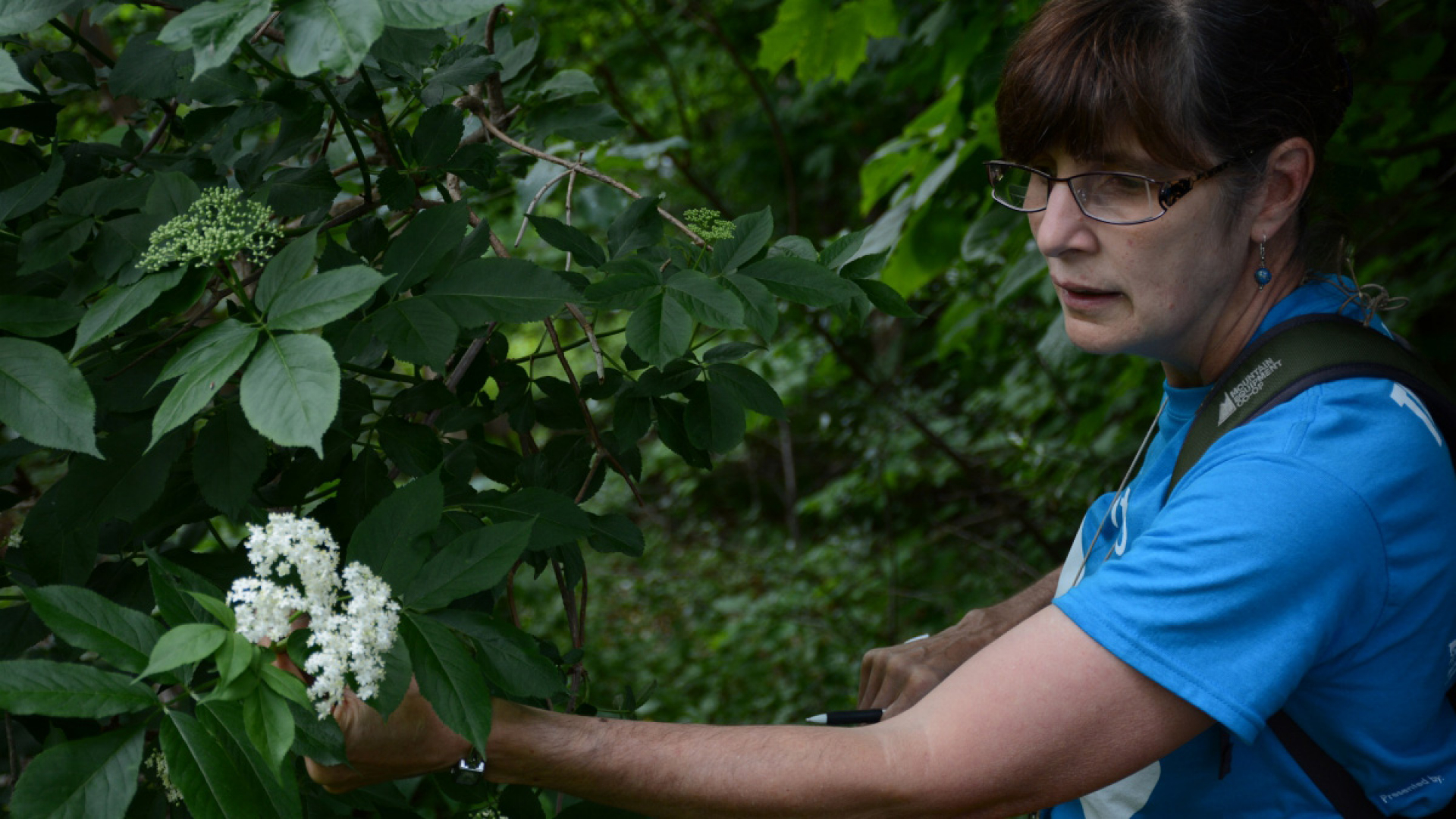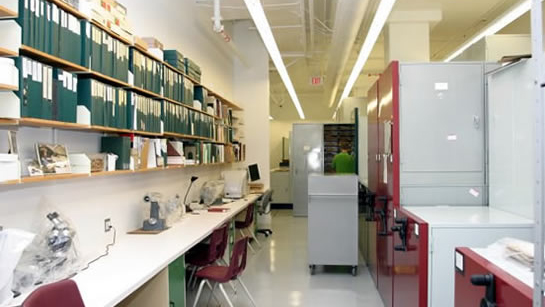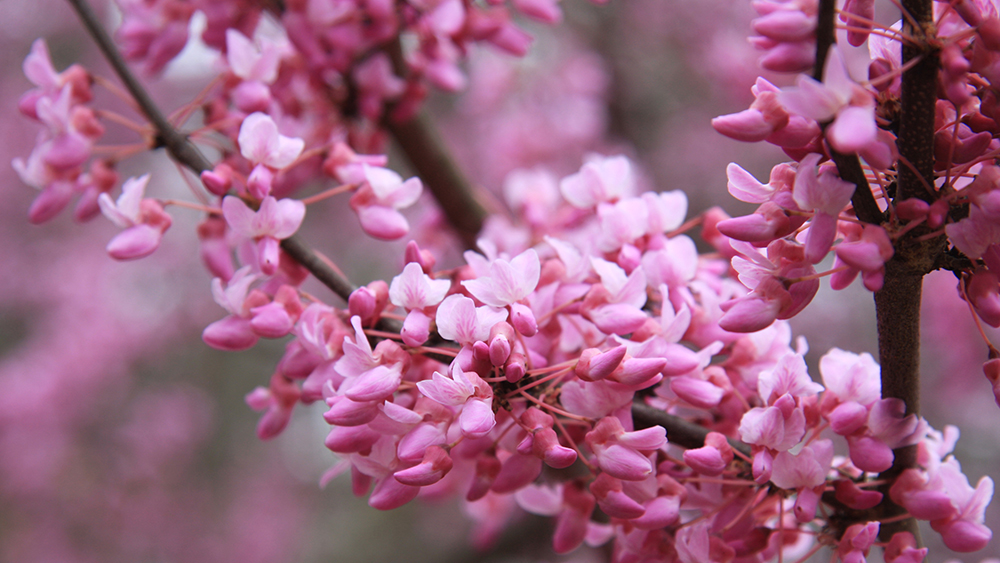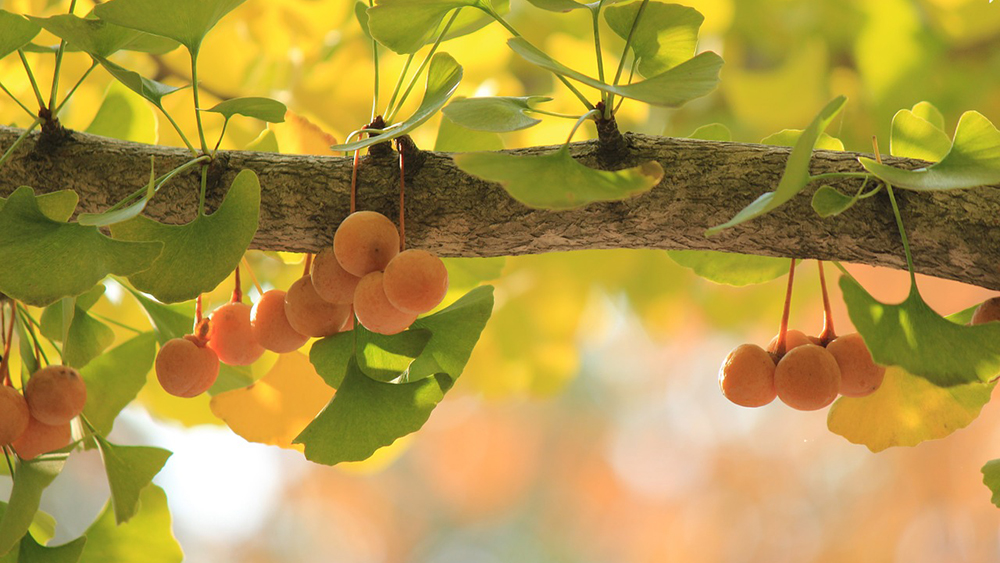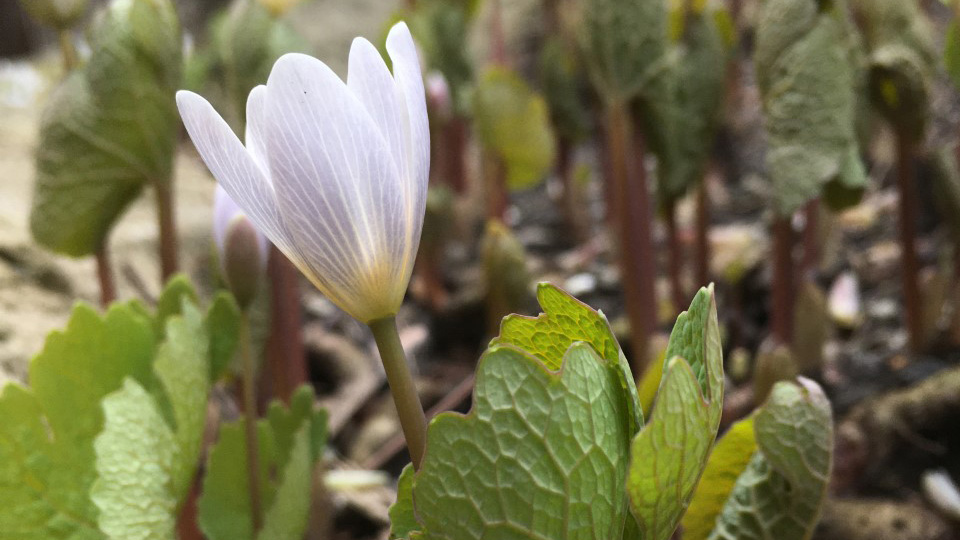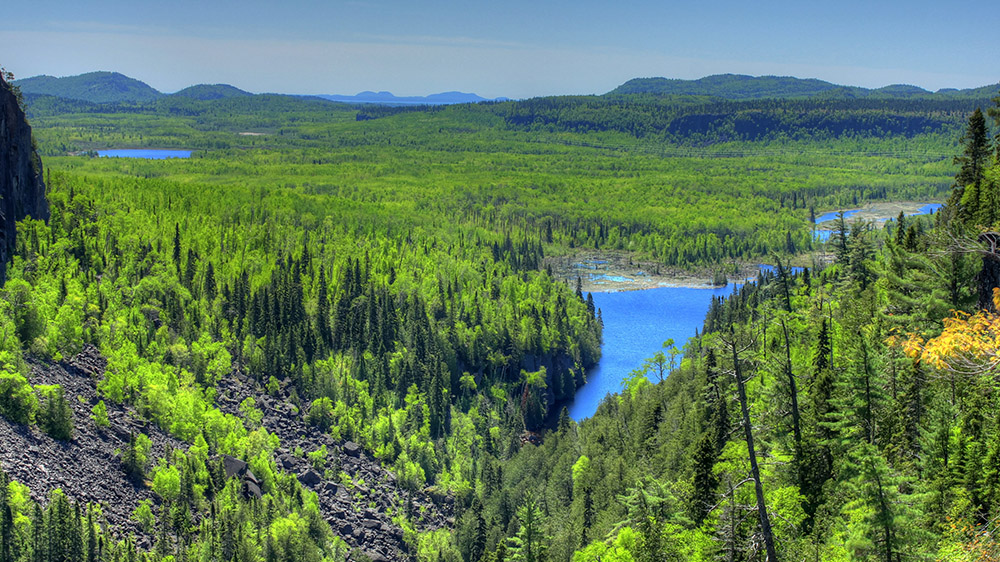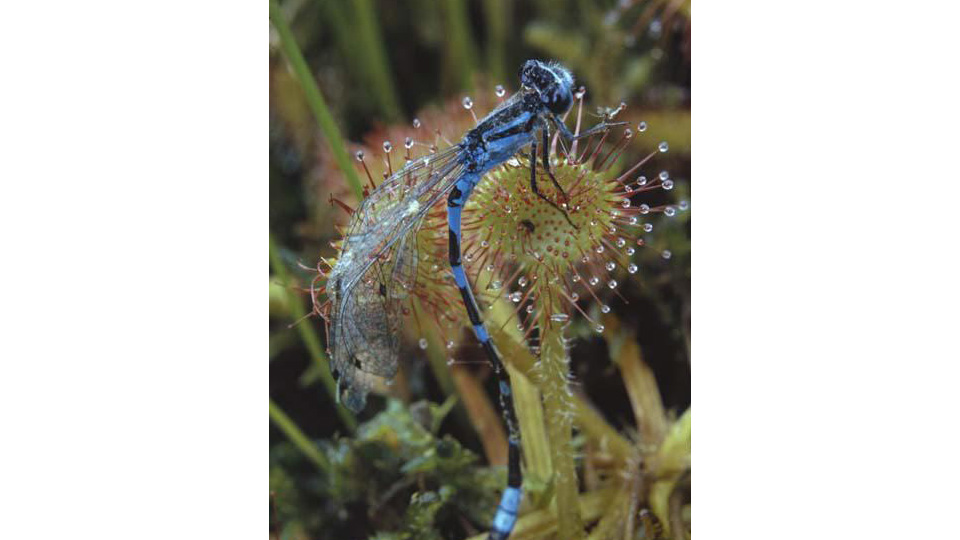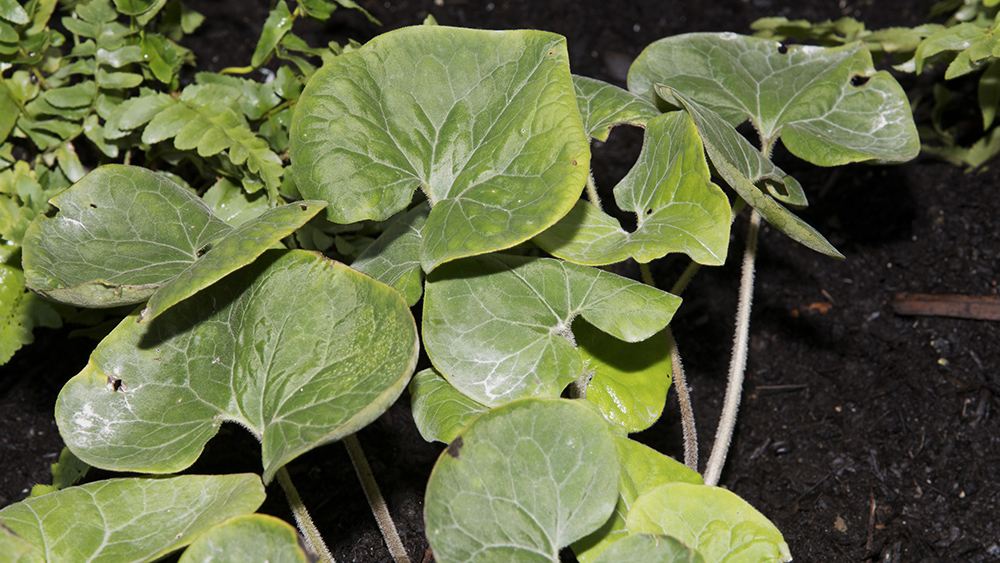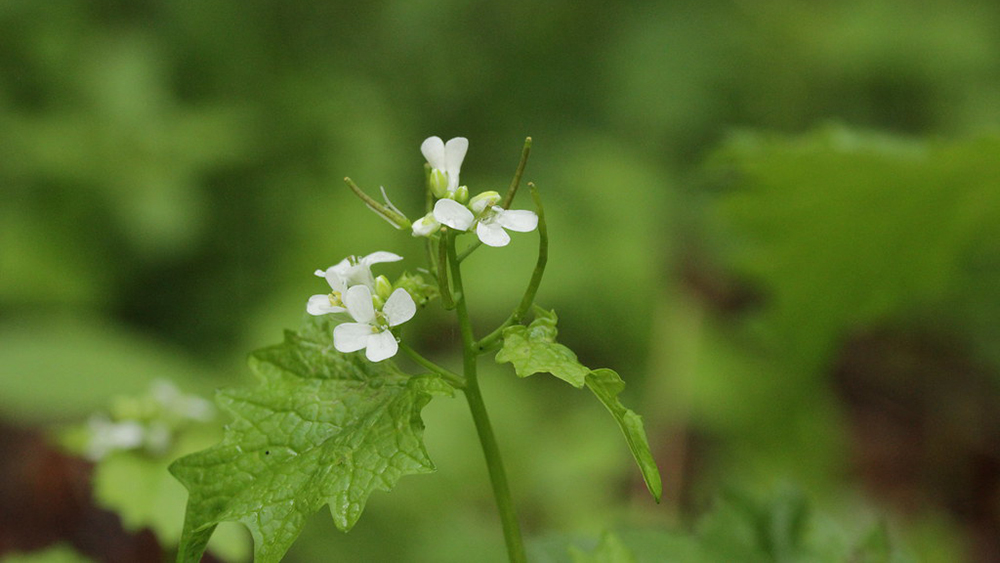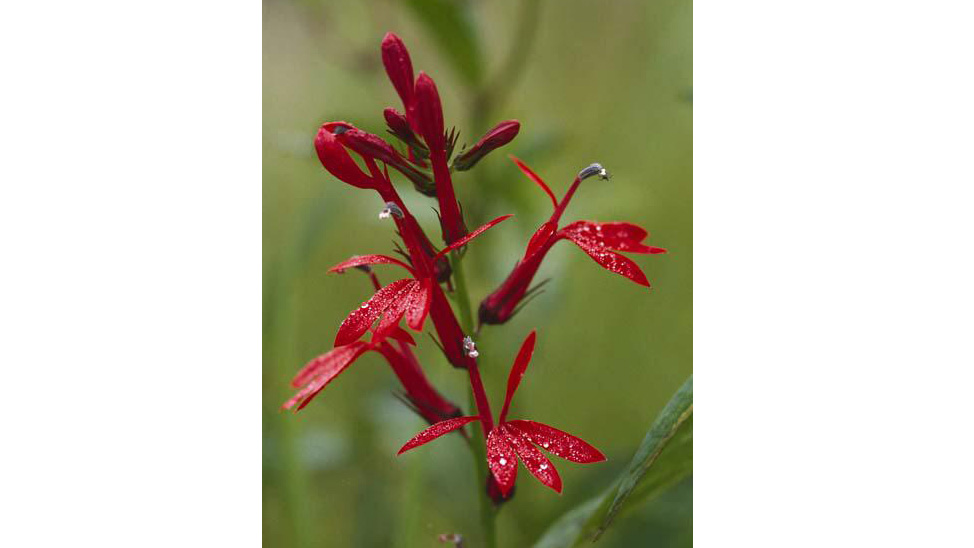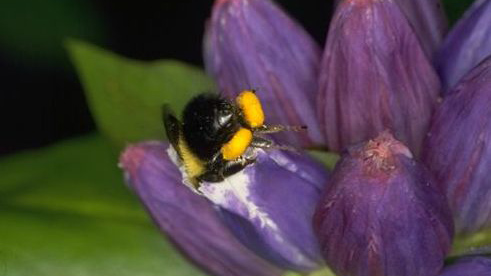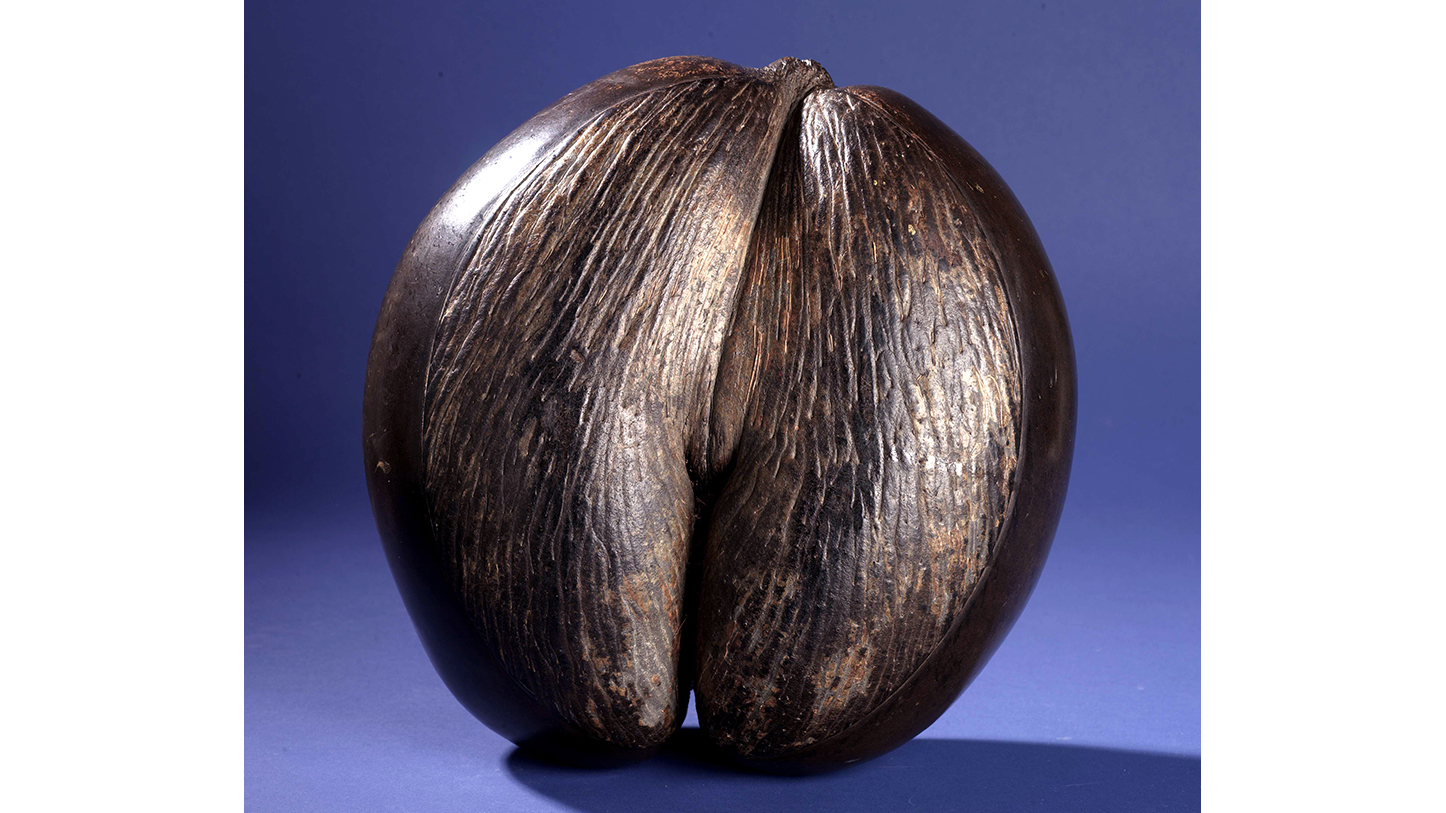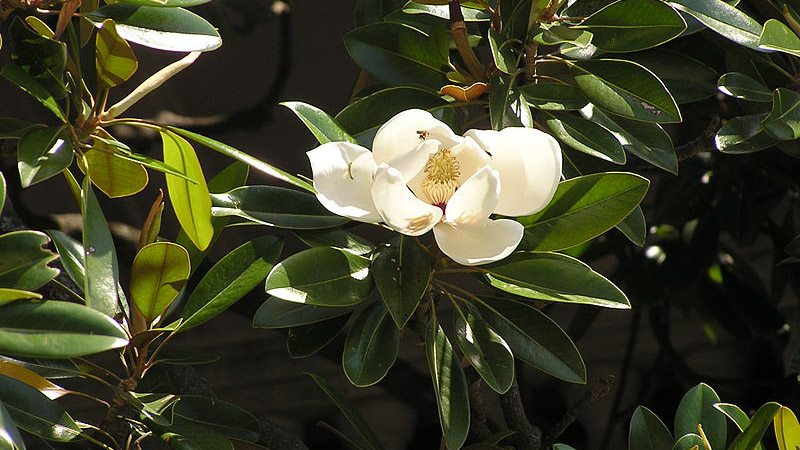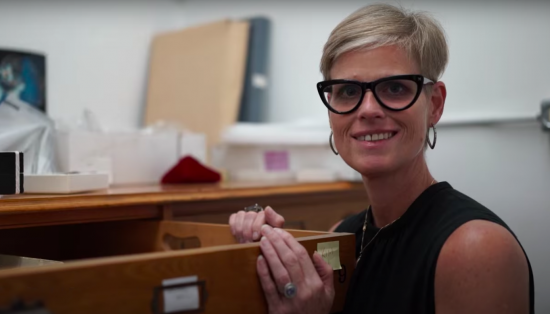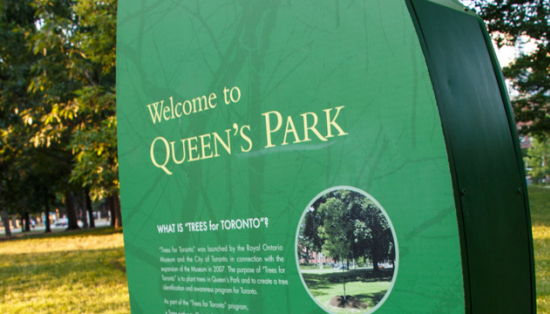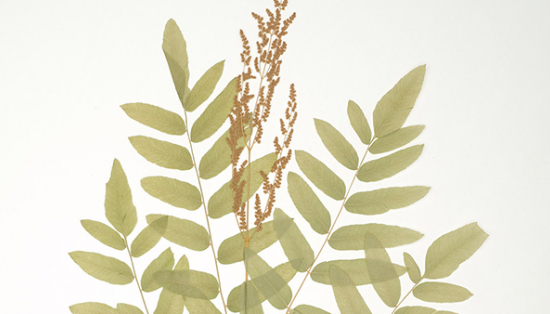Every Thursday at 10 am on Instagram we chat with a different ROM expert ready to answer your burning questions on a different subject. This week on Ask ROM Anything we speak to Deborah Metsger, Assistant Curator of Botany at the Royal Ontario Museum (ROM).
Deb is responsible for out Green Plant Herbarium, which holds 1.1 million specimens of dried pressed plants, mosses and liverworts, seeds, pollen and plant objects. Her research interests include hybridization in native maples, the Flora of Ontario, and plants as the intersection of science and culture.
Deb is also a co-author of the ROM Fieldguide to the Wildflowers of Ontario (2004), and the City of Toronto Biodiversity Series booklet Trees, Shrubs and Vines of Toronto (2016) and is currently co-writing a new ROM Fieldguide to Trees of Ontario. She is on the curatorial team for the ROM’s Keenan Family Gallery of Hands on-Biodiversity and the native plant gardens in the Helga and Mike Schmidt Performance Terrace and the Reed Family Plaza.
Q. What is a herbarium ?
A. A herbarium is a collection of preserved plants or fungi. The word herbarium means "dried garden". Plants or fungi are collected, pressed, dried and either mounted on standard size mounting sheets or placed in a packet or a box, along with a label that includes the scientific name of the plant and information about where, when and by whom it was collected. The plants are filed according to their taxonomic relationships. Herbaria may also hold collections of plant parts including pollen, seeds, fruits, and pickled flowers, and for fungi - culture collections or spore prints. Modern collections also include tissue collections for DNA analysis.
The ROM has two herbaria – Our green plant herbarium includes all of the ROM's plants, while our Fungarium includes all of the ROM's lichens and fungi.
Like all the Museum's collections - the herbarium is important because it serves as a library of voucher collections - that is specimens that represent a plant growing in the wild in a given place at a given time. We use these specimens to study the evolutionary relationships of plants, their distribution and biogeography and to predict things like climate change.
There are more than 3,100 herbaria around the world that house more than 390 million botanical specimens. Each herbarium has its own acronym so that it can be found in the international "Index Herbariorum" held at the New York Botanical Garden. The Green Plant Herbarium acronym is TRT for Toronto
Q. What is her favourite plant we can find here in Toronto?
A. It’s impossible to pick a favourite plant – I love them all – but at this time of year I am partial to the eastern redbud tree Cercis canadensis. It will begin blooming within the next month. The flower buds grow directly on the branches and bloom before the leaves. The whole canopy of the tree is outlined in pink flowers.
Q. Dinosaurs no longer exist, but do any plants from their time exist today in the same form?
A. Yes! Conifers including the dawn redwood Metasequoia glyptostroboides, maidenhair tree Ginkgo biloba and the monkey puzzle tree Aurocaria. Horsetails were also important plants in the dinosaur era, but they were much bigger than the ones we have today. Our Magnolias are among the early flowering plants that date back to the dinosaur era.
Q. Which are the best type of flowers to grow in my yard this season?
A. If by season you mean Spring, early flowering bulbs planted the previous Fall like crocus, winter aconite, early tulips, alliums, hellebores, fritillaries, narcissus and daffodils are what come up first. Among the native plants (to Ontario), bloodroot Sanguinaria canadensis, liverleaf Hepatica acutiloba, and wild ginger Asarum canadense are among the earliest to bloom.
Q. Is it true that plants grow faster if you play music?
A. There have been studies and publications that suggest plants grow faster if you play music, but it's not a proven fact.
Q. What are the best months to grow trees?
A. Trees grow all year round. If you mean, what is the best month to plant trees, I would say in the Spring when there is ample water and it is not too hot. If you are transplanting young trees it needs to be done when the tree is dormant; either in the Spring before the buds open, or in late Fall after the leaves have fallen.
Q. Is there any plant that you’ve come across that is incredibly unique or surprised you?
A. There are many fascinating plants – especially when you consider tropical and desert plants. I first encountered night-flowering cereus Hylocerus undulata at the Kampong in Miami, and then later, on my neighbour’s back porch. This is a plant that flowers at night once a year. If you miss that one night you have missed a spectacle of beauty and smell!
Sundews are carnivorous plants that trap insects. Their leaves are fringed with glands that secrete a sticky substance that looks like droplets of water. Insects try to drink these and get stuck. The leaf then curls up around the insect, and secrets enzymes that digest it. I once was in a bog in the moring and saw a patch of sundews that had trapped 18 damselflies. It was amazing!
Q. What is a native flower I should plant in my front yard?
A. Is your front yard sunny or shady? This is the first question you need to answer. The second; is it wet or dry?
Some of the popular native plants for dry sunny spots include pearly everlasting Anaphalis margaritacea, scarlet beebalm Monarda didyma, large-flowered bellwort Uvularia grandiflora, and tall blazing star Liatris spicata and butterfly milkweed, Asclepias tuberosa. For shady sites consider wild ginger Asarum canadense, Michigan lily Lilium michaganense, bunchberry Cornus canadensis, or foam flower Tiarella cordifolia.
Q. What are your favourite local edible plants most people aren’t aware of?
A. Personally, I don’t encourage people to look for edible plants in the city. I have two reasons for not doing so. First, our natural habitats and green spaces in Toronto are very limited. If everyone looked for edible plants and harvested them, it would have a tremendous impact on these spaces. Secondly – there is often a fine line between edible plants and poisonous plants, so before anything is ever eaten you have to be sure that you are identifying the plant properly.
Q. Everyone talks about invasive species in animals. But what are some invasive plants?
A. There are many invasive plants! Here in Toronto and Ontario some of our most problematic invasive plants are garlic mustard Alliaria petiolata, dog-stranging vine (black swallow wort) Vincetoxicum rossicum, common reed Phragmites australis, and European buckthorn Rhamnus cathartica.
You can find more information on the Ontario Invasive Plant Council website.
How is the decline in the bee population impacting plants in Ontario?
In general it means we are losing pollinators. There is a lot of current research on bees being done at York University. You can read more about it on their website.
Q. How harmful are these fluctuating hot and cold temperatures for blooming plants?
A. Within reason, not very. Perennial plants and bulbs that bloom early in Spring are well adapted to fluctuating temperatures. If you look closely, many have hairy leaves that protect them from the wind and cold. At this time of year a period of extreme heat can do more harm than cold because plants will break bud or emerge very early. If they do and then there is a cold snap with frost and freezing temperatures the plants can be damaged. That happened in a spectacular way in 2012! Pansies are one of the few annual plants that can survive these cold temperatures.
Q. What is your favourite plant in the ROM’s collection?
I don’t really have a favourite, but I get a lot of pleasure out of sharing our double coconut Lodoicea maldivica, which is the world’s largest seed! Whenever I show it, people giggle because it looks like a bum! Then, they are in awe that it is so large, and real! The double coconut is endemic to the Seychelles islands – the only place in the world where it grows naturally.
Q. I am new to gardening and indoor plants. Any tips to make the best flowers and produce?
A. I’m answering this based on my personal experience – not as a curator – Don't be afraid! Plants are more resilient than you think. When you plant something, look up what its preferences are in terms of light, exposure, soil type and moisture. Try to adhere to that. If leaves begin to dry and shrivel, then the plant likely needs more water. Don’t be afraid to cut the plant back if it seems gangly. This will often stimulate new growth. Basically, you need to experiment and enjoy!
Q. Are there projections on how our natural plants will change in response to climate change?
A. There is a lot of research being done from several different perspectives including looking at how plants will adapt and respond physiologically to climate change, and how the distribution of plants will change with climate change. I am most familiar with the research on species distribution. This is being done by using mathematical models that subject different distributions to different climate parameters to see how the plants will respond under different conditions.
In general, we know that the northern boundaries of many plant populations are going to move further north, and that some plants in the arctic may not be able to survive the rising temperatures. The species composition, particularly of forests, will change.
Q. What does Hybridization of native maples mean?
A. Natural hybridization is different than cultivated varieties of plants that have been hybridized by humans to create new plants with specific qualities - like multi-coloured leaves. Natural hybridization is a very common phenomenon in plants. In nature, that means they cross pollinate - the pollen from one species will fertilize a female flower of another closely related species to form a plant that is an intermediate between the two species. Many species of trees hybridize - especially oaks, poplars, and some species of maples.
Sugar maple and black maple are both native to Ontario. They are known to be very similar in their features - but some of the distinctive features of black maple are its droopy leaves with dense hairs on the back and on the leaf stalk. When we study populations of the two species closely, we find that there are many different combinations of characters - often associated with different habitats. Plant taxonomists sometimes consider blacks and sugars to be two closely related subspecies, and others consider them to be separate species. Close analysis of their morphology or form and their genetic makeup are required to understand the relationships.
Q. If you could grow anything in Toronto that isn't hardy enough to thrive outdoors.
A. I would transport the climate of British Columbia or Virginia or California - and grow everything that they can grow. I love southern magnolia Magnolia grandiflora and Rhododendron. I also love the California lilac Ceanothus thyrsiflora.
One of my favorite books is "The Living Landscape" by Rick Darke and Doug Tallamy that suggests native plants that can be grown in the Mid-Atlantic States. I would happily transplant that climate and pallet of plants here. In particular, there is a native plant called pinkroot Spigelia marilandica that I would love to grow in my back yard.
Q. Could you tell us about the path to work as a member of a curatorial team?
A. I suspect that the intent of your question may have been what is the path to become a curator? I wish I could say that there is a single path - but there isn't, and it varies from institution to institution. For the most part, curators have academic training - usually a PhD or equivalent experience in a subject or collection area - plants, mammals, birds, textiles, African art.... Depending on the discipline, other members of curatorial departments have expertise in collections care, database management, laboratory skills, specimen preparation skills, field skills, photographic skills and more. What draws everyone together is a passion for the objects that they study, care for and make available to the world.

